Introduction
When it comes to Southeast Asian food, it’s hard to put a finger on which country is home to the best cuisine. The Philippines, however, offers a plethora of hearty and culture-rich snacks. Thanks to its varied heritage from China, Spain, and America, Filipino dishes involve various techniques and flavors to create their distinct uniqueness. It also helps that most ingredients used in the food are high quality. Their islands make a large landscape for locals to source fresh seafood, root crops, vegetables, and tropical fruits.
Top 10 Philippines Snacks
Here are top 10 philippines snacks you should sourcing for your business.
1. Lumpiang Shanghai

Lumpiang Shanghai is the most popular variety of lumpia, the crispy deep-fried Filipino snack that evolved from Chinese spring rolls. Even though lumpia appears in numerous variations, the Shanghai version is characterized by a savory filling which combines ground pork or beef with carrots, onions, various seasonings, and (occasionally) shrimps.
Lumpiang Shanghai is usually sold at numerous street stalls throughout the country, but it is also a staple dish served on special and festive occasions. This delicious and crispy snack is usually served accompanied by sweet and sour dipping sauce.
2. Lumpia
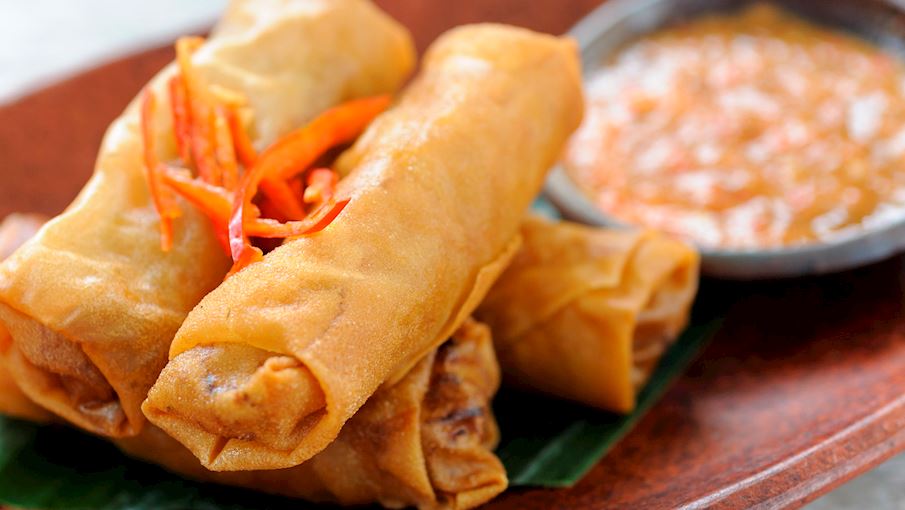
Lumpia is a simple and flavourful Filipino finger food that evolved from the Chinese spring rolls. Each lumpia consists of a rice or flour dough wrap that is stuffed with meat (most often ground pork or beef) and vegetables such as cabbage, carrots, onions, and garlic.
It is then sealed with egg wash and fried. Once it has been prepared, its crusty, crunchy exterior and tender interior are perfectly complemented with the sweet and sour dipping sauce. It can be eaten as a snack or as a side dish, and it is almost impossible to see a Filipino feast without at least one variation of lumpia, such as unfried lumpia, lumpia with bean sprouts, hearts of coconut palm, bangus, or saba bananas (ripe plantains).
3. Kwek Kwek
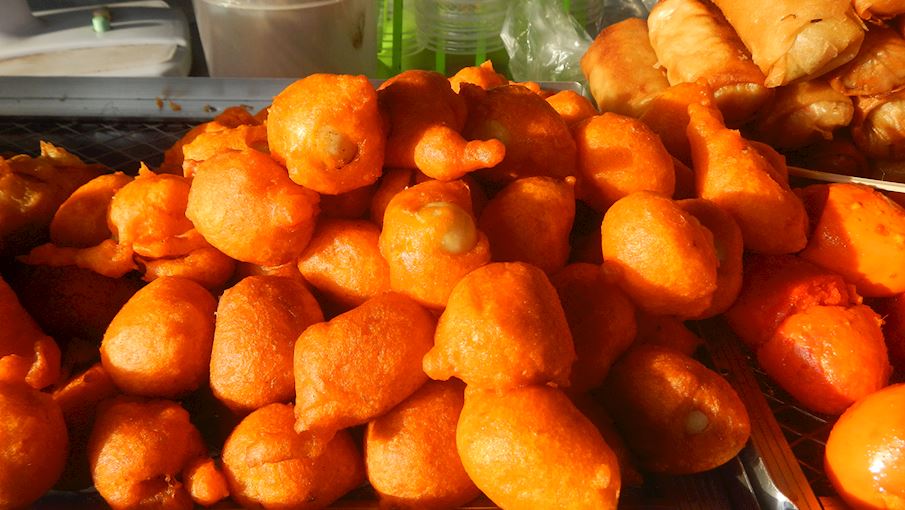
Deep-fried kwek kwek is a type of tokneneng, the omnipresent Filippino street food. While tokneneng is made with boiled chicken or duck eggs, kwek kwek is the smaller sized variety, which usually employs tiny quail eggs. Both types are distinguished by the deep orange color, provided by an unusual batter in which eggs are coated before frying.
The thick batter is made with flour, cornstarch, and water, with the addition of annatto powder, a unique ingredient which gives the dish its remarkable orange color. Hard-boiled quail eggs are thoroughly coated in batter, and fried until crispy. The essential condiment to kwek kwek is a spicy and sour sauce.
4. Butsi
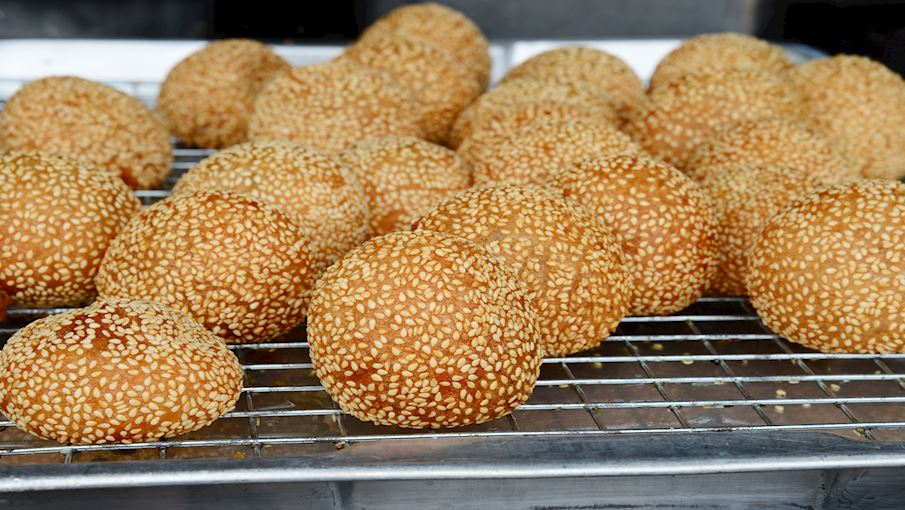
Butsi balls are the Filipino version of traditional Chinese jian dui sweets. They are made with glutinous rice flour that is formed in small round shapes and stuffed with a variety of sweet fillings such as sweetened mung bean, creamy lotus, red bean paste, or shredded coconut.
Butsi are usually coated in sesame seeds and fried until golden. Even though they originated as a traditional Chinese delicacy, their Filipino adaptation has become incredibly popular. With their crispy shell, chewy texture, and creamy filling, they can be enjoyed as a satisfying dessert or a quick sweet snack.
5. Pandesal

Pandesal is a popular bread roll from the Philippines. Its name is derived from the Spanish words “pan de sal,” which translates to “bread of salt.” However, despite its name, pandesal is characteristically slightly sweet rather than salty. The outside is usually coated in fine breadcrumbs, which give it a unique texture.
This bread is a staple at many Filipinos’ breakfast tables and is often enjoyed dipped in hot coffee or filled with various fillings like cheese, corned beef, or coconut jam. Over the years, its simple ingredients of flour, yeast, sugar, and salt have provided comfort and sustenance to generations of Filipinos.
6. Otap
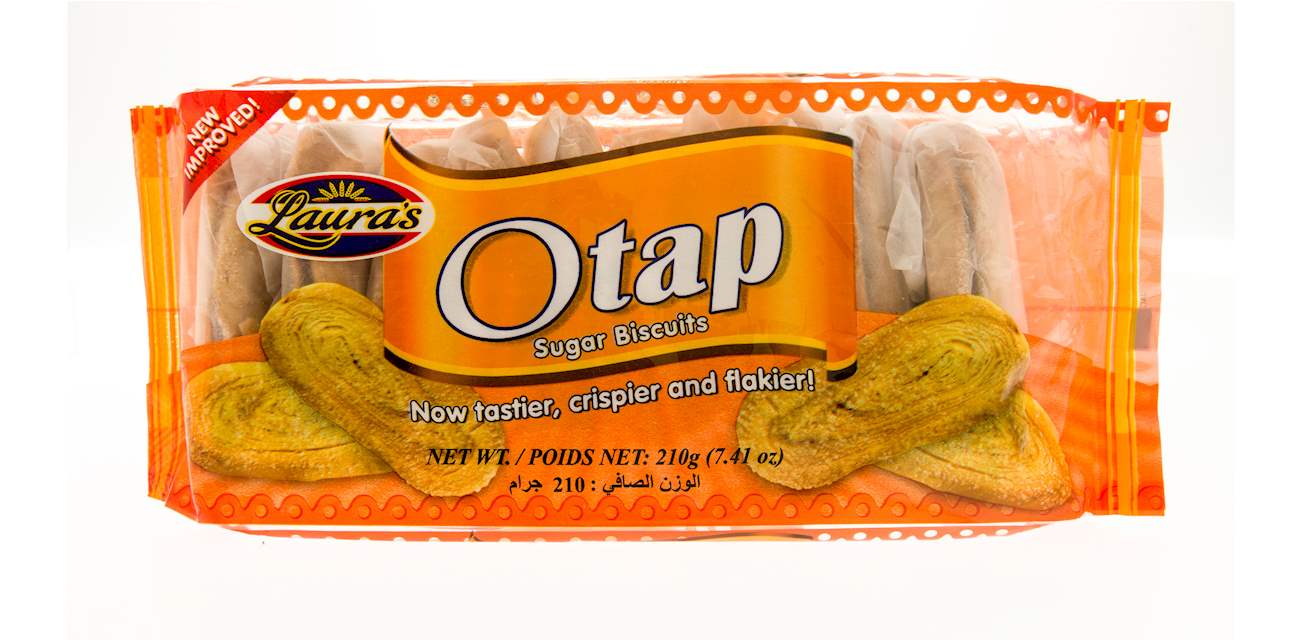
Otap is a sweet, thin, oval-shaped Filipino treat made with puff pastry. These treats are usually small in size, generously sprinkled with sugar, and have an incredibly crispy and crumbly texture. It is believed that otap originated in Cebu, and today it represents a signature product of the entire region.
The sugary biscuits are available at numerous local markets and stores and are usually enjoyed as a light dessert or a sweet afternoon snack.
7. Banana Cue
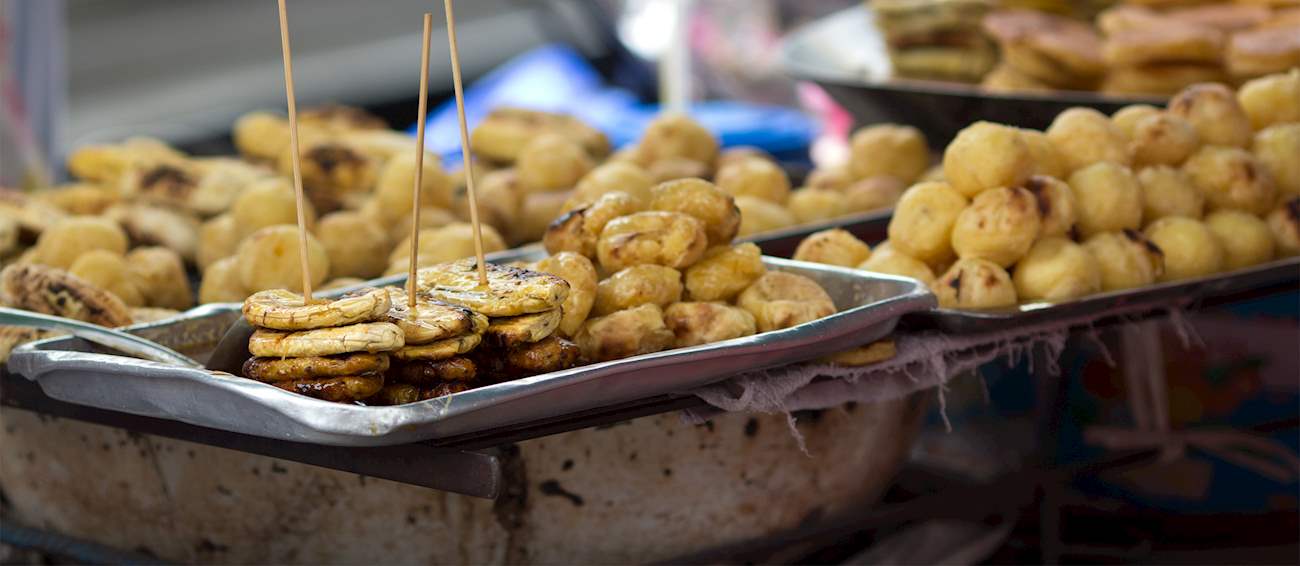
One of the most popular sweet snacks in the Philipines is banana cue, made by deep-frying saba bananas which are generously coated in a thick layer of caramelized sugar. Because they are usually enjoyed as street food, the sweet bananas are often served on bamboo skewers.
The unusual name stems from the term barbecue since caramelized bananas resemble pieces of golden-brown grilled meat. This Filipino classic is usually sold at street stands and enjoyed as a satisfying dessert or a quick afternoon snack.
8. Puto
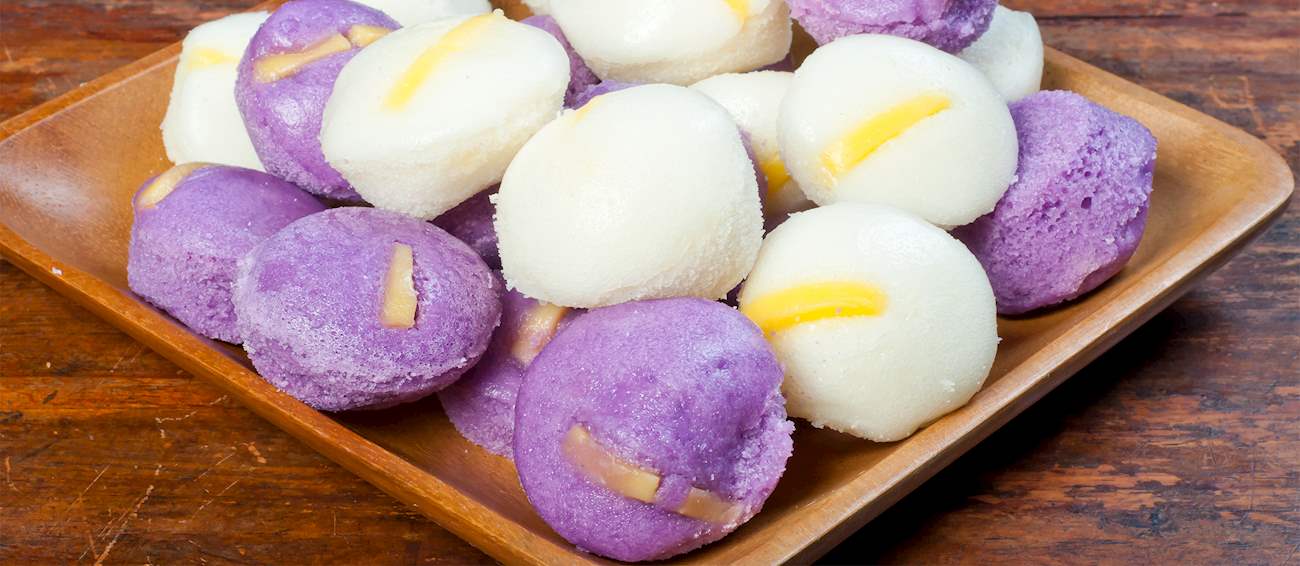
The lightly sweetened puto are popular Filipino steamed rice cakes traditionally consisting of finely ground soaked rice that is steamed in round containers and served sliced. The popularity of these versatile cakes has caused the development of many modern puto varieties, which often vary in texture, color, shape, size, and flavor.
Because of their neutral flavor, they can be enjoyed as a quick snack or a dessert, but they are also served as an accompaniment to savory dishes such as hearty Filipino stews.
9. Silvanas
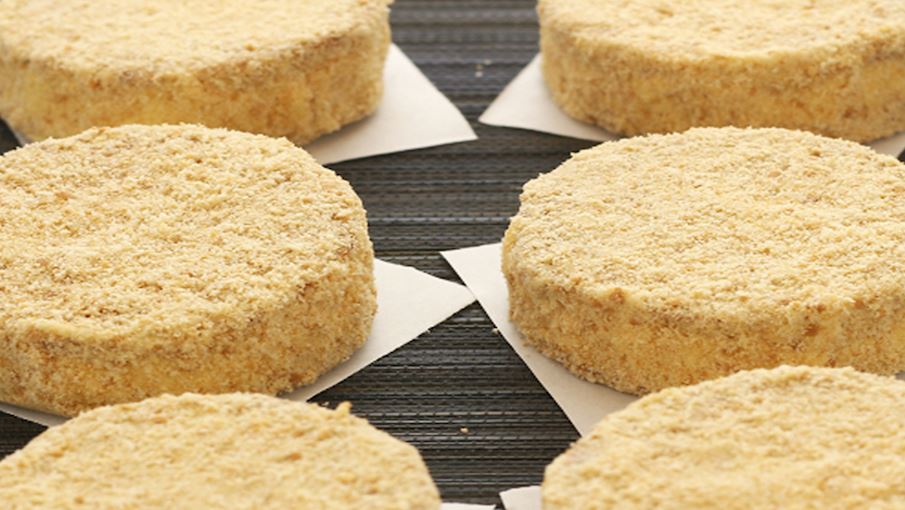
Silvanas are the snack version of a traditional Filipino dessert known as sans rival. These frozen cookie sandwiches are made with two cashew-meringue wafers that are held together with a thick layer of buttercream and are generously coated in cashew crumbs.
Although plain versions are the most common, silvanas occasionally come in various flavors such as chocolate, strawberry, mocha, or mango. Popular throughout the country, these cookies have to be refrigerated and are best served well-chilled or frozen.
10. Proben

Proben (occasionally referred to as proven) is a satisfying Filipino snack, and one of the most popular street food items in the country. It is prepared with an unusual chicken organ named proventriculus, a component that is in many ways similar to chicken gizzard.
Coated in flour or cornstarch, the tiny proben pieces are shortly deep-fried until the exterior becomes golden brown and crispy. They can be fried individually and served in plastic bags, or skewered and fried on bamboo sticks. Cheap, fast, and nutritious, proben has come to represent one of the most common street food varieties in the Philippines, which is especially favored among the young students.
Challenges Sourcing Philippines Snacks
Embarking on a culinary adventure to discover the flavors of the Philippines snacks can be an exciting journey filled with mouthwatering delights. However, sourcing authentic Filipino snacks outside of the Philippines presents a unique set of challenges. Let’s explore some of these hurdles and discover ways to overcome them to satisfy your craving for delicious Philippines snacks.
1. Limited Availability
One of the primary challenges in sourcing Philippines snacks is the limited availability of authentic ingredients and products outside of the Philippines. Many traditional Filipino snacks rely on locally sourced ingredients that may not be readily accessible in other countries. As a result, finding authentic Filipino snacks can be a daunting task for enthusiasts living abroad.
2. Cultural Barriers
Cultural barriers also pose challenges when sourcing Philippines snacks. Some Filipino snacks are deeply rooted in local traditions and may not have gained widespread recognition outside of the Philippines. This lack of familiarity can make it difficult for consumers to identify and access authentic Filipino snacks in international markets.
3. Import Regulations
Import regulations and restrictions can further complicate the process of sourcing Philippines snacks from abroad. Certain snacks may be subject to stringent import regulations, making it challenging for vendors and distributors to import them into foreign markets. This can lead to limited availability and higher prices for authentic Philippines snacks outside of the country.
4. Quality Control
Maintaining the quality and authenticity of Philippines snacks during the importation process is another concern. Factors such as transportation, storage conditions, and packaging can impact the freshness and flavor of snacks, potentially compromising their authenticity and appeal to consumers outside of the Philippines.
5. Language Barrier
The language barrier can also hinder efforts to source authentic Philippines snacks, especially for consumers who are not familiar with Filipino language or cuisine. Understanding product labels, ingredient lists, and packaging information may require translation or assistance, adding another layer of complexity to the sourcing process.
Overcoming Challenges
Despite these challenges, there are several strategies to overcome hurdles and successfully source authentic Philippines snacks:
Explore Ethnic Markets
Look for specialty ethnic markets or Filipino grocery stores in your area that cater to the Filipino community. These establishments often stock a variety of authentic Philippines snacks imported directly from the Philippines.
Online Retailers
Utilize online retailers and e-commerce platforms that specialize in international foods. Many online stores offer a wide selection of Philippines snacks and ingredients that can be delivered to your doorstep, providing convenience and accessibility.
Connect with Filipino Communities
Engage with Filipino communities and food enthusiasts through social media, forums, and online communities. These connections can provide valuable insights, recommendations, and sources for authentic Philippines snacks.
DIY Approach
Embrace the DIY approach by learning to make your own Philippines snacks at home using authentic recipes and ingredients. Experimenting in the kitchen allows you to customize flavors and ingredients to suit your taste preferences while maintaining authenticity.
AsiaCommerce Ready to Help Sourcing Snacks from Phillipines
If you are looking for Philippines snacks for your business but you don’t know how to check import regulations, quality check product, having problem with language barrier, AsiaCommerce ready to help. It’s easier when you let AsiaCommerce handle all of application and registration for FDA in your country. We will help you with handling the complicated rules for imported products, establishing the proper structure for product imports, ensure your paperwork is complete and accurate, speeding up approvals.
If you’re interested in exploring market opportunities in Indonesia, visit our service page for more information. Our team will work with you every step of the way, from finding a supplier, shipping door-to-door, and handling import documents to ensure your market entry to Indonesia.
0 Comments